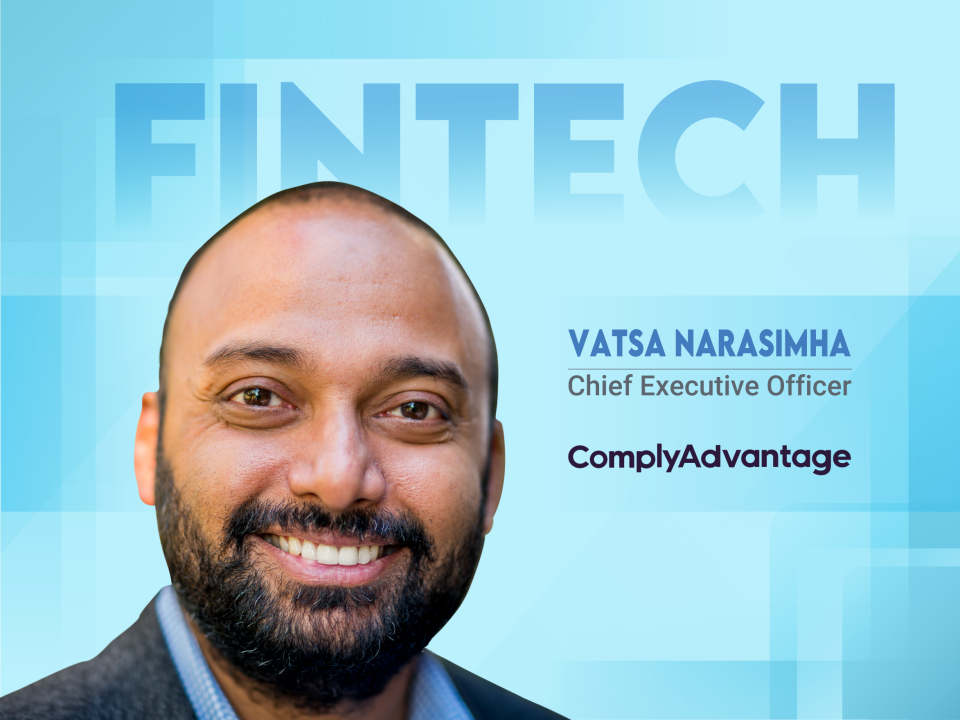Hi Vatsa, tell us about yourself and your role at ComplyAdvantage
I’ve been with ComplyAdvantage for a little over four years and joined the company because I care deeply about our mission — helping organizations detect and eliminate financial risk. I initially came on board as the chief operating officer and financial officer before becoming CEO in 2022. Today, more than 1,000 companies across the globe use ComplyAdvantage to gain the insights they need to make smarter business decisions and avoid unnecessary risk.
FINANCIAL CRIME IS A PERVASIVE, MULTI-TRILLION-DOLLAR PROBLEM THAT AFFECTS PEOPLE AND ORGANIZATIONS EVERYWHERE DAILY. KNOWING IF A BUSINESS IS SANCTIONED OR NOT IS ESSENTIAL SO THAT ORGANIZATIONS CAN AVOID COMPLIANCE VIOLATIONS AND THE ASSOCIATED FEES AND REPERCUSSIONS. WE HELP CUSTOMERS DO THIS EVERY DAY, ALLOWING THEM TO IDENTIFY AND ELIMINATE FINANCIAL CRIME RISKS.
We’d love to hear more about your recent acquisition and how it benefits end-users…
Acquiring San-Francisco-based innovator Golden made good strategic sense for us because, at a high level, it helps us accelerate our organic growth in the U.S. At a tactical level, Golden’s technology will speed up our ability to ingest different data types at scale, giving customers the ability to access intelligence from a wider variety of sources.
In addition, the Golden team’s world-class experience building a knowledge graph to help regulated entities manage their risk exposure will advance the graph work our engineering and product teams are doing. Our teams’ organizational structures also aligned, providing a smooth transition. Overall, we are expanding our AI capabilities in large language modeling to help us provide our clients with even greater insights to help them manage their risk more effectively.
Browse more Fintech Insights: Global Fintech Interview with Sadra Hosseini, CEO at Ryft
When it comes to financial crime: what are some of the factors you’d like to highlight in terms or cautionary measures and sophistication of modern online attacks?
AI is being used by many organizations like ours for good – to modernize how people can make payments and provide important and actionable intelligence, for instance. At the same time, bad actors are exploiting AI to commit various and increasingly sophisticated financial crimes, including launching attacks and accessing financial systems, data poisoning, burglar bots, online eviction, forgery, market bombing, and more. This is what is becoming known as “Crime as a Service,” where bad actors create a model for these crimes that can be sold and repeated more easily by other less-skilled actors.
Despite this misuse of technology, I believe AI can and will prevail in a positive and impactful way. As leaders in this space, it is our duty to continue to innovate and deliver new features and functionality that will outpace bad actors and give our customers the upper hand in combating financial crime. In addition, the more “AI education” that organizations provide, the better prepared their employees and customers can be to avoid scams.
Can you share a few thoughts on the modern state of B2B fintech and how you feel this market will shape up down the line?
RegTech’s role within the broader B2B fintech companies ecosystem and the importance of risk management will only continue to grow. If there is one thing that the geopolitical landscape of the last couple of years has taught us, it’s that a customer’s status can change overnight. Ensuring your systems are robust and flexible enough to handle uncertainty is imperative.
Firms are often presented with a dichotomy between human expertise and automation. That is a false choice. Companies of every size need to ensure that their analysts operate efficiently and spend their time on the greatest risks to the business. So, their technology needs to be scalable to grow with the business, flexible enough to meet their risk appetite, and continuously updated. In addition, transparency is key. The technology should be auditable so that regulator questions can be answered quickly. And lastly, alerts need to be accurate and provide actionable insights to maximize analyst efficiency.






Comments